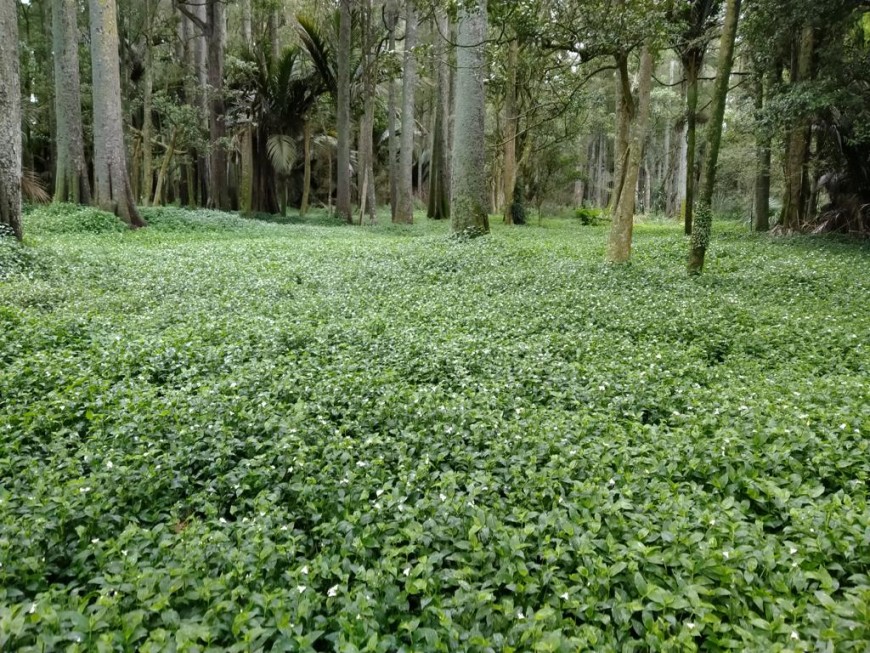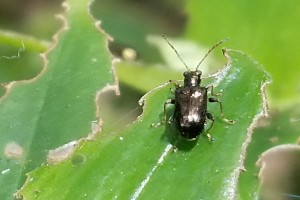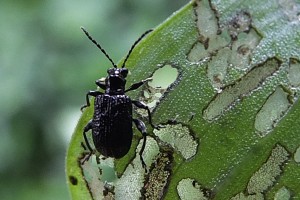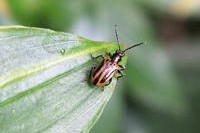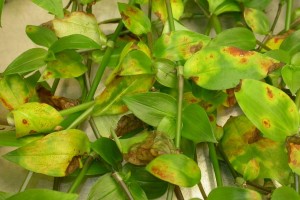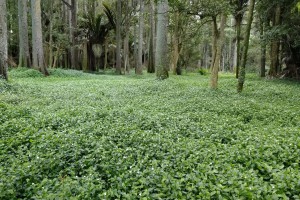Tradescantia
Project overview
Tradescantia is native to South America. It was brought to New Zealand as an ornamental plant, but it has become a major weed throughout the North Island and parts of the South Island. It forms dense mats in forest margins, forest clearings, and stream margins, smothering tree and shrub seedlings and low-growing native plants.
Four biocontrol agents from Brazil have been released to attack tradescantia. Three are beetles: the tradescantia leaf beetle (Neolema ogloblini) damages the foliage, the tradescantia stem beetle (Lema basicostata) attacks the stems, and the tradescantia tip beetle (Neolema abbreviata) attacks the growing tips. All three beetles have established and are showing early promise. The beetles cause extensive damage to tradescantia in their native range, and it is hoped they will do the same here.
A yellow leaf spot fungus (Kordyana brasiliensis) has also been released in New Zealand in 2018 and is establishing well in damp areas. The fungus is expected to complement the beetles, especially since it will likely thrive at sites that flood regularly.
- pdf Science fair success - Issue 79, p.5 pdf File, 878 KB
- pdf Smut for tradescantia soon - Issue 77, p.7 pdf File, 850 KB
- pdf Tradescantia beetles on the up - Issue 76, p.2-3 pdf File, 759 KB
- pdf Tradescantia beetles make big impression - Issue 72, p.2-3 pdf File, 645 KB
- pdf New tradescantia agent approved? Issue 64, p. 8 pdf File, 686 KB
- pdf Tradescantia beetles gain momentum - Issue 60, p.2 pdf File, 705 KB
- pdf Another white smut in shining armour? Issue 60, p.3 pdf File, 705 KB
- pdf Tradescantia leaf beetle released - Issue 56, p.2 pdf File, 801 KB
- pdf Tradescantia beetles out of containment - Issue 55, p.2 pdf File, 552 KB
- pdf Tummy bug for tradescantia beetle - Issue 50, p.4 pdf File, 965 KB
- pdf Tradescantia beetle approved - Issue 47, p.1 pdf File, 723 KB
- pdf Tracking transcendentia's enemies - Issue 41, p.3 pdf File, 1.5 MB
- pdf Brazilian excursion bears fruit - Issue 35, p.4 pdf File, 823 KB
